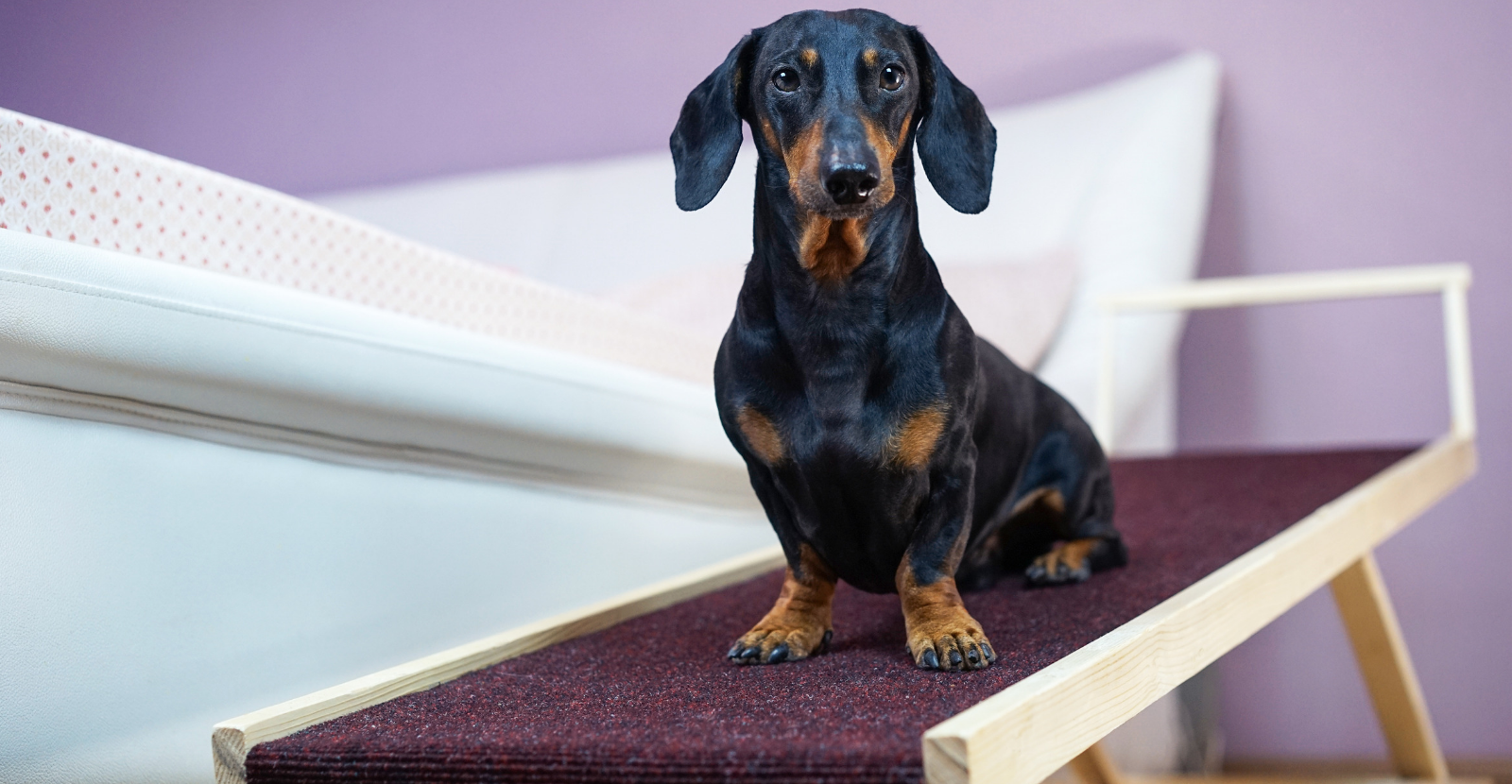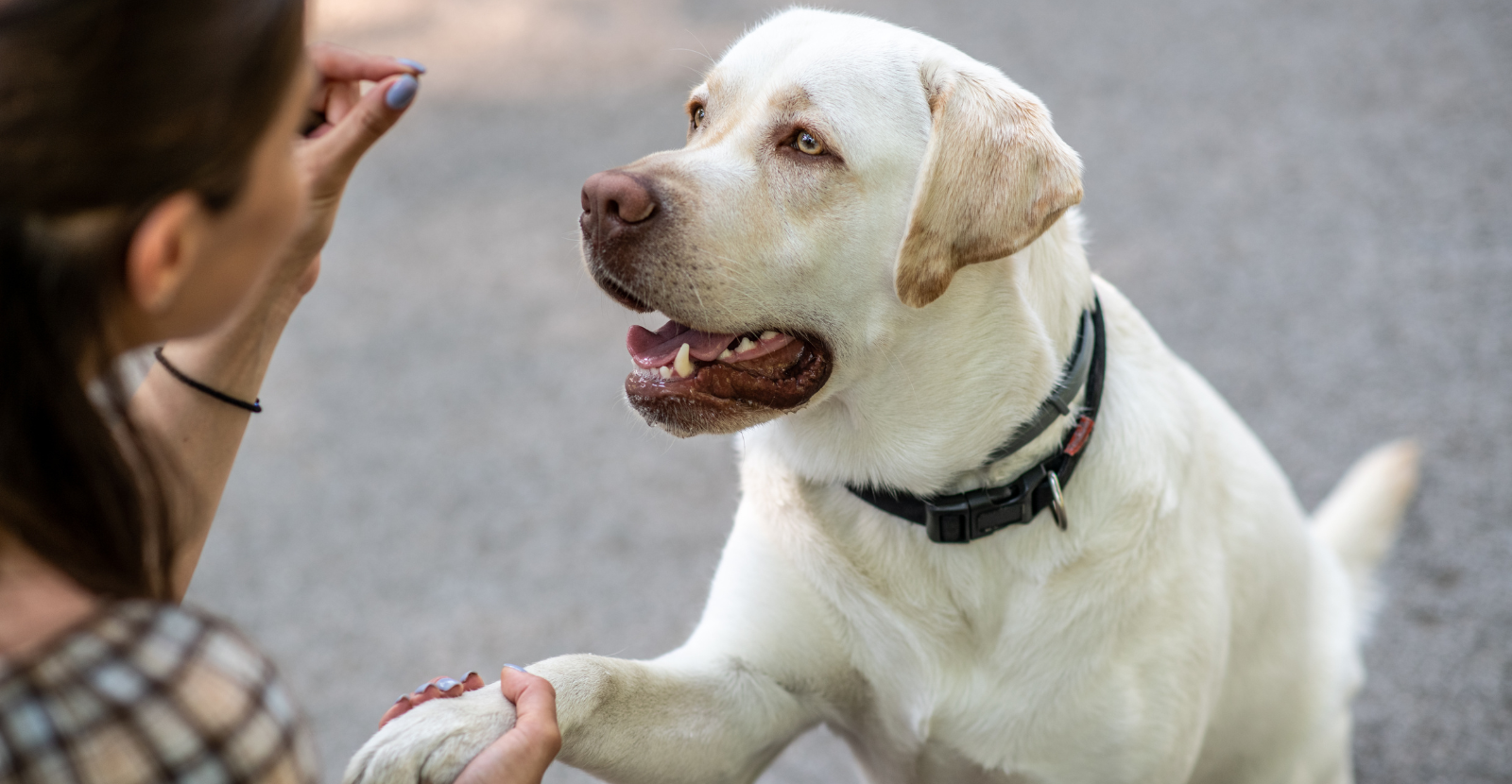Is your dog age 8 or older? If so, you may have noticed how they are not as active as they once were. You can trust them when you leave. They are fine with relaxing and laying by your side. You may leave your things on the floor and they don’t get torn up! Ah yes, you are firmly in the adult to senior dog stage.
The average life span of our adorable canines is 10 – 15 years old, depending on the breed. It stands to justify if your dog is age 8 or older, they may be in the golden years of their lives. Here are a few tips, complete with your own downloadable checklist, on how to make your home easier for your dog to get along in as they age.
Download Your Checklist
Read on, or download this handy checklist to make your home accessible for your senior dog.
Feeding
Feeding needs change as our dogs age. If you haven’t already, be sure you are giving age-appropriate food for your senior dog. Also keep this in mind:
- Elevate dishes when feeding
Older dogs can have discomfort in their joints and neck from bending down to eat and drink. Make sure your dog’s bowls are elevated during feeding times so he or she can eat all that they need.
- Include joint supplements in diet
As dogs age it is important to make sure they are receiving essential nutrients in their diet to help maintain their joint health. Some proven ingredients to look for include Green Lipped Mussel (GLM), glucosamine and chondroitin.
Bedding:
Does your senior dog sleep with you or in their own beds? Can they easily get in and out of their beds? Watching your dog as they get in their beds is a good way to assess what needs to change. Ramps up stairs and high places are a great way to help your dog get around easier. Be sure to:
- Provide a suitable sized dog bed with a fluffy consistency
Hard floors are tough on joints, especially those of older dogs. Make sure your dog has a good size bed that they can lay in comfortably with enough stuffing to protect their joints from hard floors.
- Place dog bed in a warm location
Cold temperatures cause joints to become stiff, especially first thing in the morning. Make sure your dog’s bed is in a warm location away from drafts to make getting up and around easier.
Exercise:
You may consider cutting back on exercise as they age. However, this could be against their best interest. Your dogs still need exercise, no matter their age!
- Daily Exercise
To keep aging joints limber, dogs need two exercise sessions per day, the length and intensity determined by your dog’s current abilities.
- Use Pet Steps or Ramp
Older dogs often suffer from stiffness and stairs can be painful for them. Make sure there are alternate options available for your dog to ensure he or she can get around as needed.
Glyde Mobility Chews
Parnell Living Science are the experts on osteoarthritis (OA) or arthritis in dogs. Amazingly, arthritis is one of the most untreated diseases plaguing all breeds and ages of dogs. A first line of defense is to add a supplement like Glyde Mobility Chews to your dog’s diet. Our unique formula uses natural, gluten-free ingredients which promote healthy joints to let your dog live the life they deserve. Glyde is the only joint supplement which contains proven levels of three key ingredients working to combat the signs of aging and relieve the painful signs of arthritis.
Glyde's proven formula uses these powerful ingredients:
- New Zealand Green Lipped Mussel (GLM): A powerful, natural anti-inflammatory
- Glucosamine: Reduces cartilage degradation
- Chondroitin Sulfate: Helps rebuild cartilage
It is important to keep the various stages of life in mind for our dogs. What they needed when they were puppies and adults is different than what they need in their senior years. Unfortunately, our dogs cannot talk to us and tell us, “these stairs are getting tougher to climb,” or “my joints are stiff and sore.” We must address these issues for them.
















